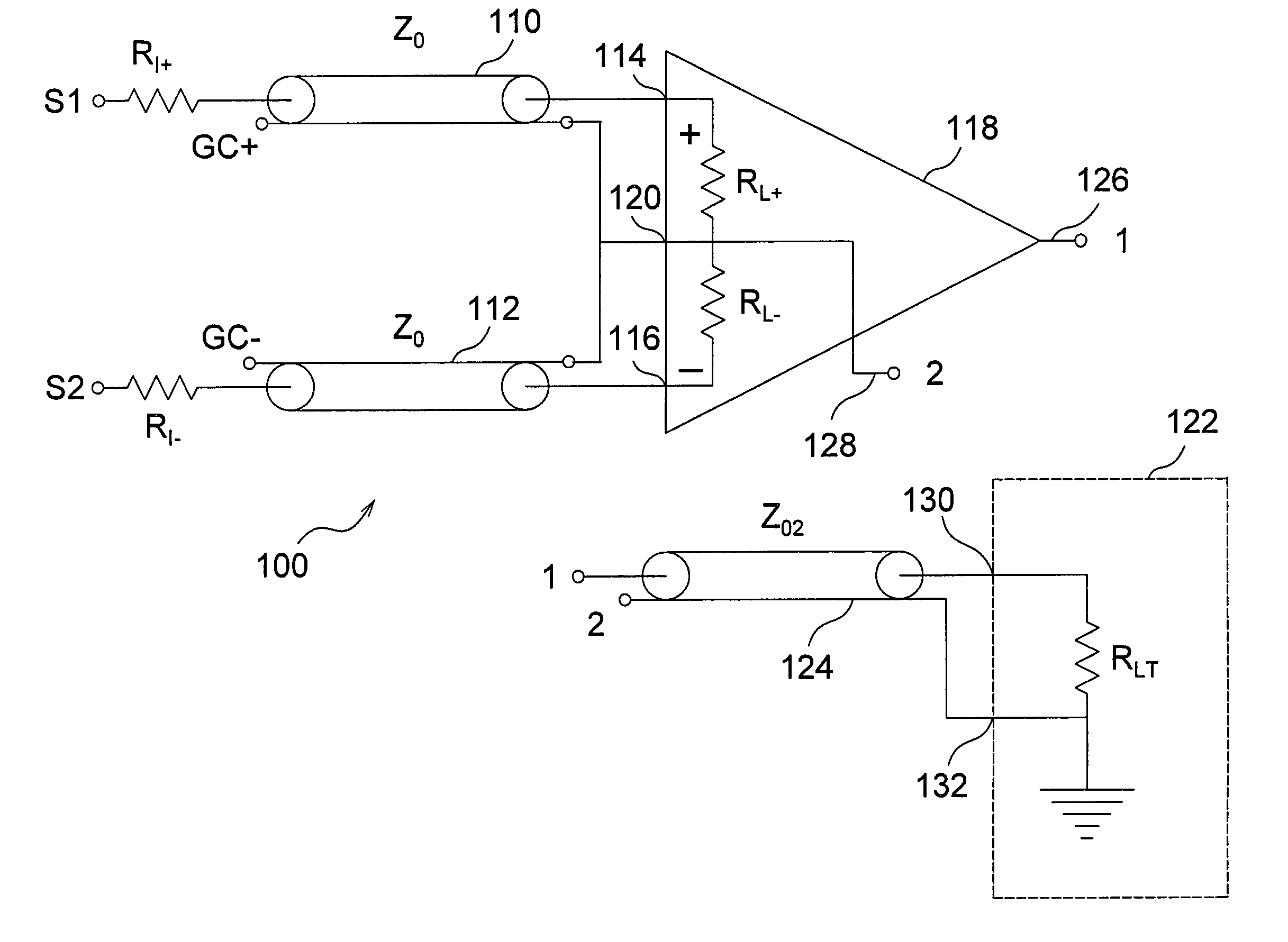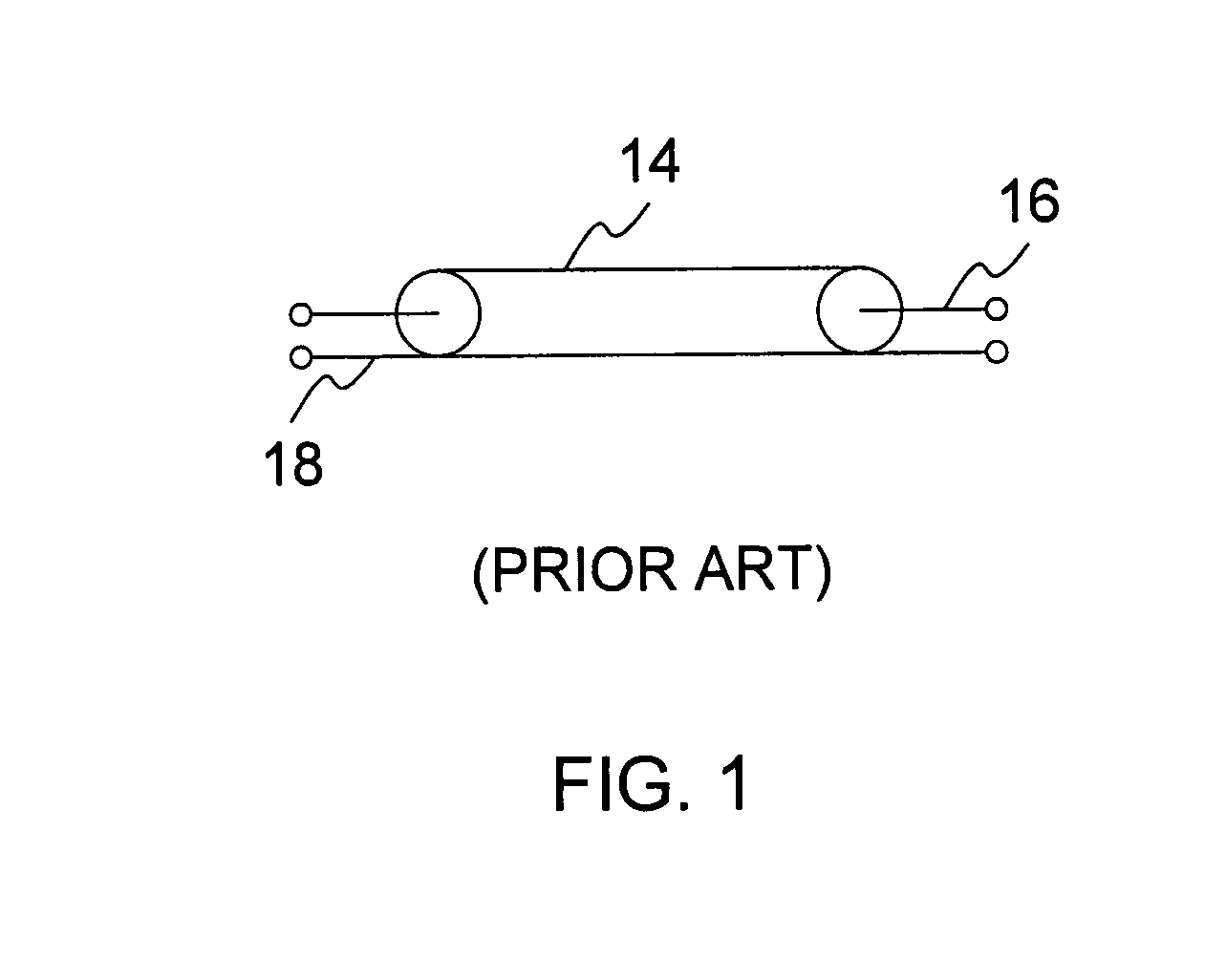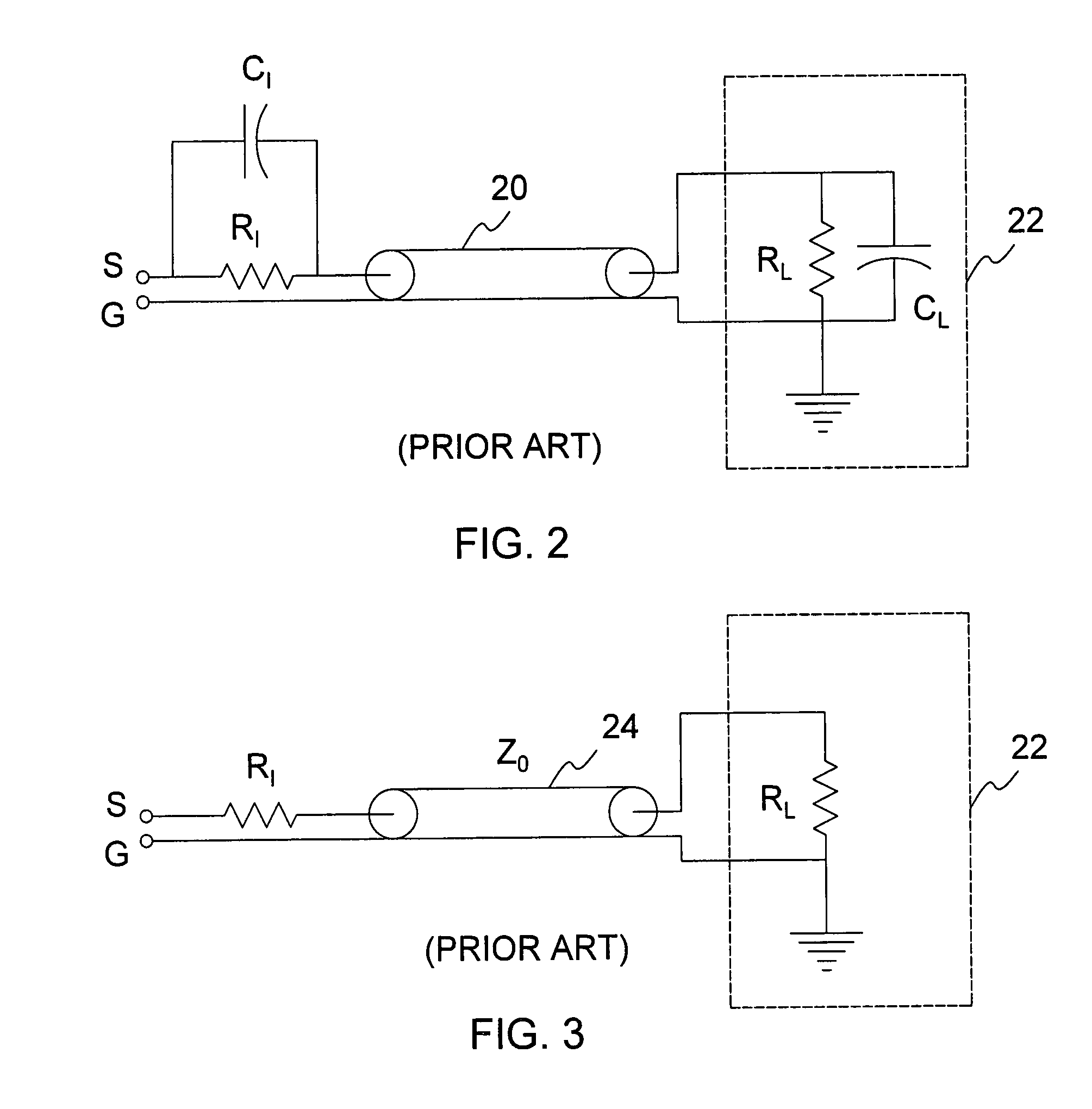Transmission line input structure test probe
a technology of input structure and transmission line, which is applied in the direction of resistance/reactance/impedence, instruments, measurement devices, etc., can solve the problems of reducing the measured voltage, affecting the measurement of dynamic timing characteristics, and the high-impedance test probe is not suited for high-frequency measurements
- Summary
- Abstract
- Description
- Claims
- Application Information
AI Technical Summary
Problems solved by technology
Method used
Image
Examples
Embodiment Construction
[0030]The present invention is directed to an active differential test probe with a transmission line input structure. The test probe of the present invention is advantageously described with reference to prior art test probes. FIGS. 2–5 depict several prior art test probes. FIGS. 6–9 are circuit diagrams of exemplary test probes of the present invention. FIGS. 10–18 show one preferred embodiment of matched transmission lines for a probe tip on a common substrate that may be flexible.
[0031]Throughout this application, reference is made to the signal conductor and the ground conductor of various transmission lines. FIG. 1 is a circuit diagram that illustrates an exemplary transmission line 14. The exemplary transmission line 14 includes a signal conductor 16 and a ground conductor 18. FIG. 1 illustrates how the signal conductor and the ground conductor of a transmission line are depicted in the remaining figures. As will be apparent to one skilled in the art, however, the transmissio...
PUM
 Login to View More
Login to View More Abstract
Description
Claims
Application Information
 Login to View More
Login to View More - R&D
- Intellectual Property
- Life Sciences
- Materials
- Tech Scout
- Unparalleled Data Quality
- Higher Quality Content
- 60% Fewer Hallucinations
Browse by: Latest US Patents, China's latest patents, Technical Efficacy Thesaurus, Application Domain, Technology Topic, Popular Technical Reports.
© 2025 PatSnap. All rights reserved.Legal|Privacy policy|Modern Slavery Act Transparency Statement|Sitemap|About US| Contact US: help@patsnap.com



